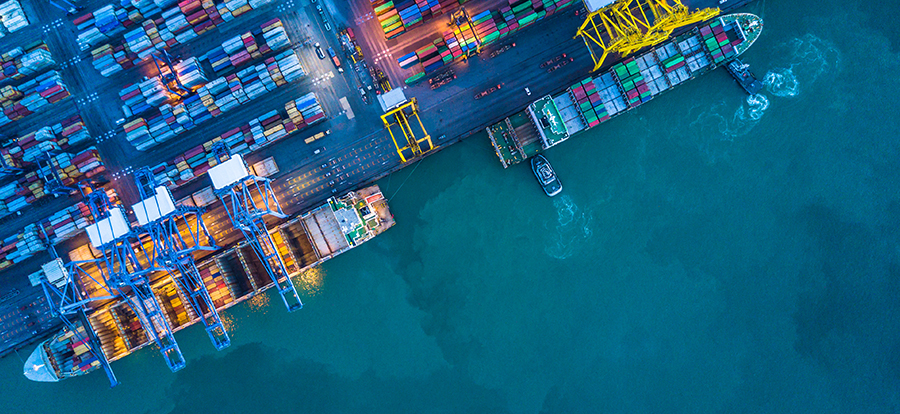Are you ready for the marine new normal?

At the 2018 Simcenter conference in Prague, the keynote speaker Nancy Rademaker used cassette tapes as one example of the ‘old normal’ – something that once was the standard but has now been replaced by the ‘new normal’, streaming. Music, like many things, is now digital. This is the new normal, and younger generations have no interest in, or understanding of, the old normal. While I am sure most of us can accept this for music, are we ready for the new normal in every aspect of life? Or are our ideas and practices still based on the old normal? What does this mean in the marine industry?
The old way: Towing tank testing
We see the clash between the old and new normal on a regular basis in the marine industry. In some respects, the industry has moved with the times. For example, the use of CAD models instead of line drawings is now standard practice in vessel design. In other respects, though, the industry is slow to change. There is a continued insistence on confirming each design’s suitability via towing tank testing of a physical scaled model. The limitations of towing tanks are well known: Translating model-scale measurements to full-scale vessels is open to many uncertainties and requires the use of empirical scaling formulae. Also, due to the differences in Reynolds number, it is difficult to study interactions between key components accurately such as propellers, appendages and hulls. Dependence on this limited, expensive and time-consuming method is holding the industry back from innovating in design and efficiency.
This resistance to switching to digital simulation is even more interesting when the marine industry can also be a world leader in innovation and new technology. For example, Maersk is investing in using blockchain in the global supply chain, aiming to promote more efficient and secure global trade.
In a time when it is increasingly critical for the industry to meet stringent environmental regulations, it seems that everyone accepts that things need to change but no one is willing to make the decision to do so. Other industries have been quicker to adopt changes. In the aerospace industry, for example, CFD models are now used alongside wind tunnel tests, speeding up certification programs and reducing the overall cost. Why is it that these two industries have different attitudes to adopting new methods? How can the same simulation technology be accepted in an industry whose main cargo is human lives, with millions traveling daily, yet is deemed not sufficiently validated to be trusted with the design of a cargo vessel?
The marine new normal: Full-scale CFD
I believe it is time to move to the marine new normal: designs analyzed using CFD simulation, at full scale. The additional benefit of this approach is that multiple designs can be tested under realistic operating conditions, such as wind, waves and self-maneuvering, all of which are again not possible in a towing tank. While I call this the new normal, it is not a new method, but a well-established, well-validated tool with many proven results and successes in other industries as well as marine. The 2017 Lloyd’s Register workshop on full-scale CFD simulation proved that when used properly CFD can accurately match sea trial data.
This white paper takes a measured look at the use of full-scale CFD simulation. The author, Professor Milovan Peric, argues that full-scale CFD increases the value that simulation brings to marine design. He works through several marine applications and looks at the common reservations in the industry. He concludes:
“Many experienced users in the maritime sector are already routinely and successfully applying CFD simulations under full-scale conditions. For those who are still hesitating, it is time to start gathering experience since the trend is clear. Using Simcenter STAR-CCM+ makes it possible to meet the goal of conducting full-scale analysis of complete systems under realistic operating conditions by creating a digital twin of the real system.”
Here is my vision for the marine new normal in design: using an agile digital twin of a vessel that includes full-scale CAD and simulation data. You can include sea trial data (if available). This digital twin covers all aspects of vessel performance and is accessible in real-time to all stakeholders. With this in place, you can quickly test multiple ‘what if’ scenarios: What is the impact on safety and performance of damage or adverse weather conditions? What if we redesign part of the hull? What if we repurpose the vessel to alternative routes? What if we change to a new engine?
If this sounds too far-fetched to you, consider: Even 10 years ago would you have predicted that you would stream music from the cloud? And yet, that is the reality today. The digital twin must become the new normal in marine design. The only question is when we will come to accept it as standard.
Interested in learning more about full-scale CFD?
Download the full white paper by Professor Peric here. Watch this webinar to learn how digital tools can change your approach on how to design a ship, ensuring all requirements are met and removing the design spiral from your process.


